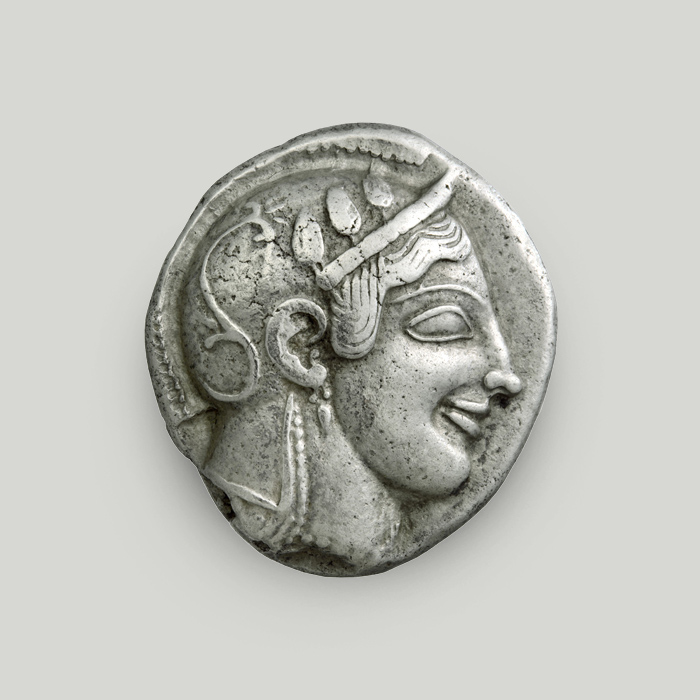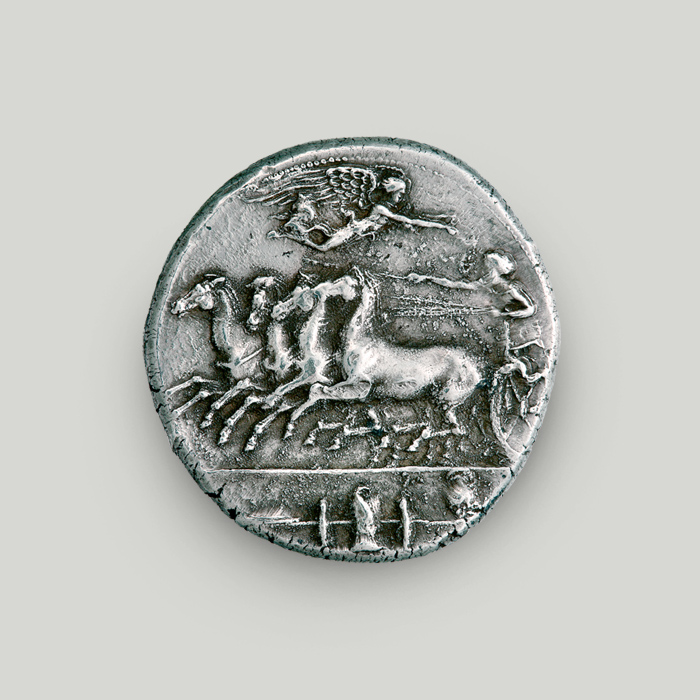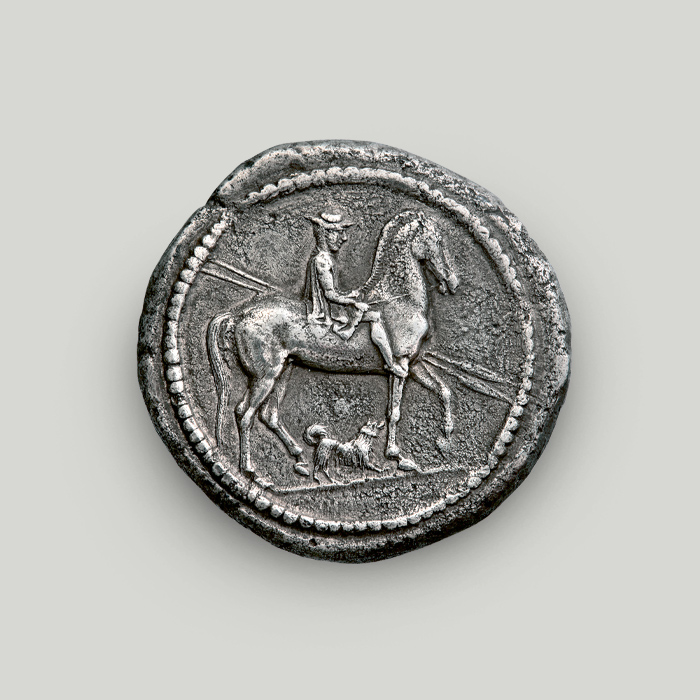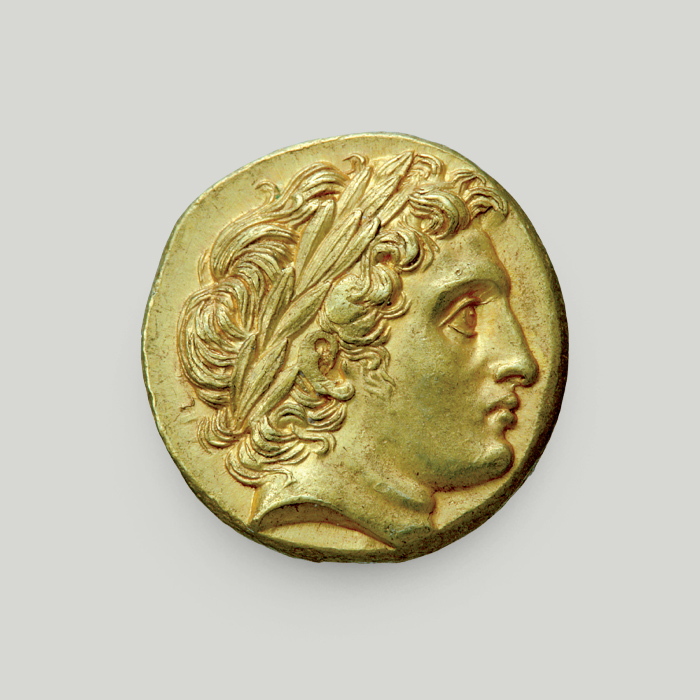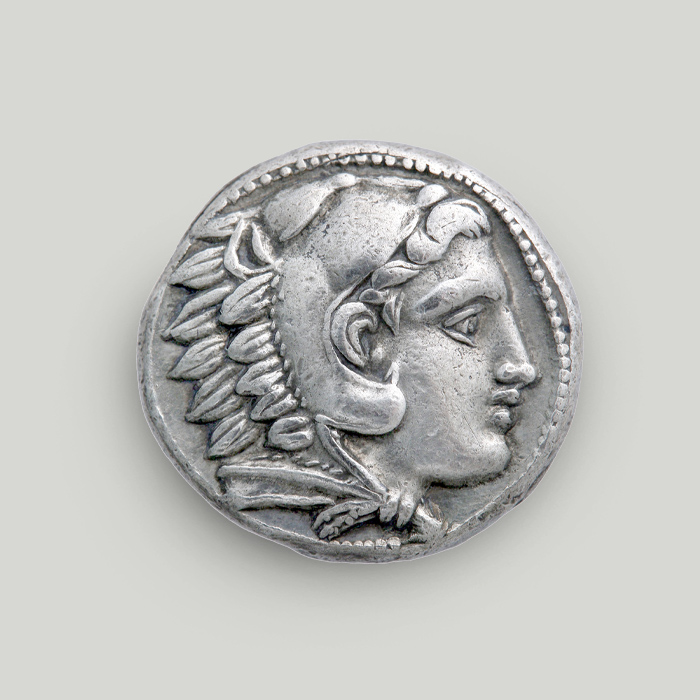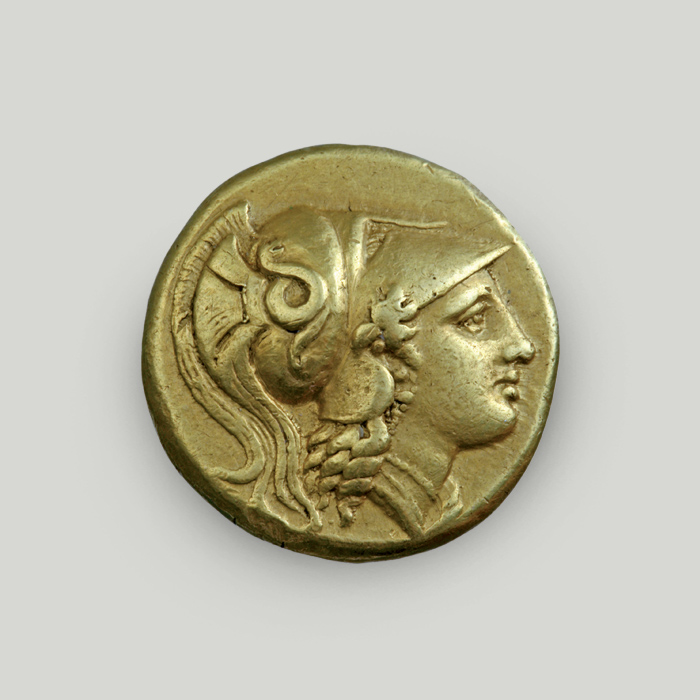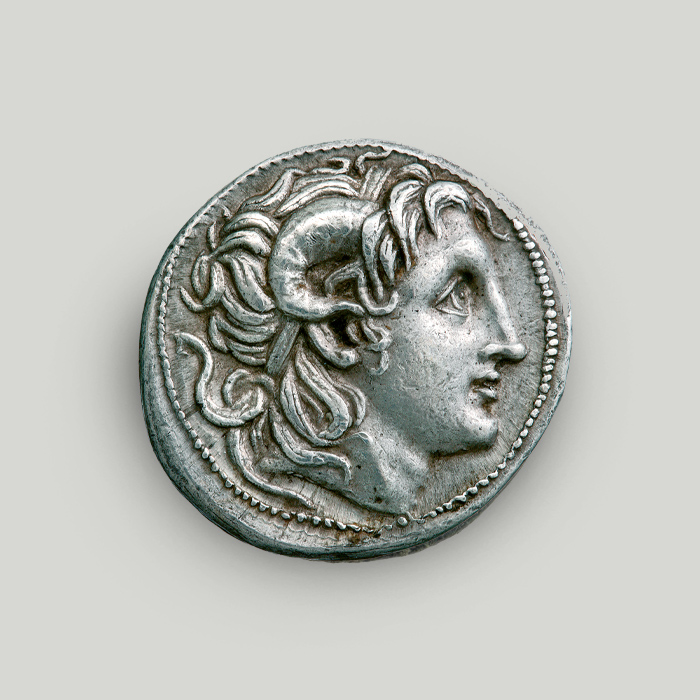Silver decadrachm, Athens
The silver decadrachm of Athens is perhaps the most important coin in Greek antiquity. Only once in its long history did Athens issue a decadrachm. There are but 2 examples left in Greece: one at the Numismatic Museum of Athens and one in the Alpha Bank Numismatic Collection. Its type is the same as that of the silver tetradrachm, only the owl’s wings are spread.
Obverse
Head of Athena wearing round earrings and Attic-style helmet with a floral and olive leaf decoration. The head is in profile but includes a depiction of the entire almond-shaped eye. This depiction of the eye is typical of archaic Greek art. So is the curving of the lips into a half-smile.
Reverse
Owl facing forward with its wings spread. On the top left, an olive branch – a branch from Athena’s sacred tree. The legend on the right, between the owl’s wings, reads the first letters of the city’s name: ΑΘΕ (ATHE). The entire type is enclosed in an incuse square.
Athens, the cradle of culture and democracy
Athens was the most important city in classical antiquity. It is considered a hub of social and political reform, artistic and literary inspiration and overall creativity.
Over the 6th and 5th centuries BCE, a new political system was born and established in Athens: democracy. It safeguards fundamental human rights and provides the foundation of all western culture.
The appearance of decadrachms
Around 465 BCE, when Athenian tetradrachms – the famous owls – had conquered the international markets of the time, Athens issued the decadrachms, the only coin of value this high in its entire history.
This issue is associated with the Athenian General Kimon’s victory in the battle of the Eurymedon River in 466 BCE. No more than 40 examples survive at present, but these are enough for us to know that they were minted for a total of 30-40 years, i.e. from 465 to 431 BCE, when the Peloponnesian War broke out.
The Athenians must have issued such a high denomination due to the need to make high-value transactions related to ship building, construction and military funding.
A rare and important coin
From a historical point of view, the Athenian decadrachm is perhaps the most important coin in Greek antiquity.
This extremely rare coin is every ancient coin collector’s dream. At present, there are but 2 genuine Athenian decadrachms in Greece. One is at the Numismatic Museum of Athens and the other is part of the Alpha Bank Numismatic Collection.
Similarities and differences with tetradrachms
The type on the silver decadrachm is the same as that on the Athenian silver tetradrachm: the goddess Athena on the obverse and the owl on the reverse. The decadrachms, however, have no crescent on the reverse.
The depiction of the owl is also slightly different. Athena’s sacred bird and symbol is pictured facing forward with its wings spread, covering the entire field and making the coin medal-like.
The silver decadrachm was issued about 50 years after the similarly fashioned tetradrachm had become the market standard.
Fractions and etymology
As suggested by its name, the decadrachm equalled 10 drachmas. Each drachma equalled 6 obols.
Before the invention of coins, people used iron spits of 1-1.5 meters in length for their daily transactions.
The spit was called ovelos, and 6 of them were considered a standard handful. This handful was later dubbed “drachma”, as it could be grasped (drattomai in Ancient Greek) in a person’s fist.
When coins started to circulate, the word ovelos (the previously used spit) changed to ovolos (“obol” in modern numismatics) and was used to denote the value once held by 1 spit, i.e. 1/6 of a drachma.
The coin in our publications
The Athenian silver tetradrachm is mentioned in Athenian Owls by Dr Dimitra Tsangari. The publication presents the history of this Athenian coin and includes photographs of 30 coins from the Alpha Bank Numismatic Collection.
Buy the publication Athenian Owls on the Alpha Bank e-shop.
The Alpha Bank Numismatic Collection is not open to the public.
Research visits to the Numismatic Collection can be organised upon request.
Contact us to book your visit.
